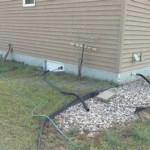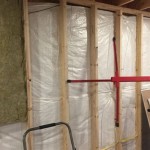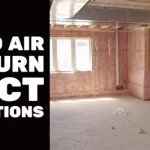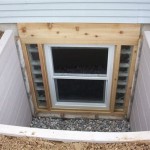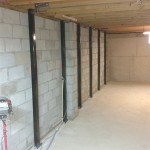Insulation for Basement Concrete Walls
Insulating basement concrete walls is a crucial step in creating a comfortable and energy-efficient living space below grade. Uninsulated concrete walls allow heat to escape during the winter, leading to higher energy bills and discomfort. Additionally, moisture can penetrate through the porous concrete, causing mold and mildew problems.
There are several types of insulation available for basement concrete walls, each with its own advantages and disadvantages. The choice of insulation depends on factors such as budget, space constraints, and the desired level of insulation.
Rigid Foam Insulation
Rigid foam insulation is the most commonly used type of insulation for basement concrete walls. It is a lightweight, durable material that provides excellent insulation value. Rigid foam insulation is available in sheets or panels that can be easily cut and fitted to the walls.
The R-value of rigid foam insulation ranges from R-4 to R-7 per inch. The higher the R-value, the better the insulation. For basement concrete walls, it is recommended to use rigid foam insulation with an R-value of at least R-5.
Spray Foam Insulation
Spray foam insulation is a newer type of insulation that is becoming increasingly popular. It is a liquid that is sprayed onto the concrete walls, where it expands to fill all nooks and crannies. Spray foam insulation provides excellent insulation value and air sealing. It also helps to prevent moisture from penetrating the walls.
The R-value of spray foam insulation ranges from R-6 to R-7 per inch. It is more expensive than rigid foam insulation, but it provides better insulation and air sealing.
Batt Insulation
Batt insulation is a traditional type of insulation that consists of fiberglass or cellulose fibers. It is available in rolls or batts that can be installed between the studs in the walls. Batt insulation is less expensive than rigid foam or spray foam insulation, but it provides lower insulation value.
The R-value of batt insulation ranges from R-3 to R-4 per inch. For basement concrete walls, it is recommended to use batt insulation with an R-value of at least R-4.
Installing Insulation on Basement Concrete Walls
The installation of insulation on basement concrete walls is a relatively straightforward process. However, it is important to follow the manufacturer's instructions carefully to ensure that the insulation is installed properly and effectively.
To install rigid foam insulation on basement concrete walls, follow these steps:
- Clean the concrete walls and remove any dirt or debris.
- Cut the rigid foam insulation to the desired size.
- Apply adhesive to the back of the rigid foam insulation.
- Press the rigid foam insulation onto the concrete walls.
- Seal the joints between the rigid foam insulation with caulk or spray foam.
To install spray foam insulation on basement concrete walls, follow these steps:
- Clean the concrete walls and remove any dirt or debris.
- Set up the spray foam insulation equipment according to the manufacturer's instructions.
- Spray the foam onto the concrete walls in an even layer.
- Allow the foam to expand and cure.
To install batt insulation on basement concrete walls, follow these steps:
- Clean the concrete walls and remove any dirt or debris.
- Cut the batt insulation to the desired size.
- Install the batt insulation between the studs in the walls.
- Seal the joints between the batt insulation with caulk or spray foam.

How To Insulate Your Basement S Concrete Walls The Seattle Times

Basement Blanket Insulation Building America Solution Center
%20(T).jpg?strip=all)
How To Insulate Concrete Basement Walls

How To Finish A Basement Diy

Basement Blanket Insulation Building America Solution Center
Basement Blanket Insulation Building America Solution Center

Insulating Basement Walls For Increased Energy Efficiency Wall Insulation Installation

Insulation How Do I Insulate My Unfinished Basement With Half Foundation Siding Home Improvement Stack Exchange

Do Concrete Basement Walls Need Insulation

Etw Foundation 4 Xps Insulation On The Exterior Of Wall Buildingscience Com
